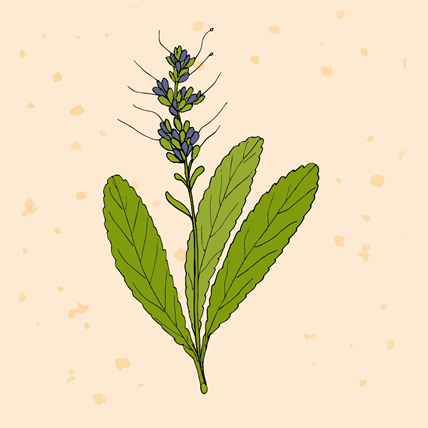
Background
Picrorhiza is used for liver problems, fever, allergy, and many other conditions, but there is no good scientific evidence to support these uses.
Safety Safety definitions
Special Precautions & Warnings:
Pregnancy and breast-feeding: There isn't enough reliable information to know if picrorhiza is safe to use when pregnant or breast-feeding. Stay on the safe side and avoid use."Auto-immune diseases" such as multiple sclerosis (MS), lupus (systemic lupus erythematosus, SLE), rheumatoid arthritis (RA), or other conditions: Picrorhiza might cause the immune system to become more active. This could increase the symptoms of auto-immune diseases. If you have one of these conditions, it's best to avoid using picrorhiza.
Diabetes: Picrorhiza might lower blood sugar levels in some people. Watch for signs of low blood sugar (hypoglycemia) and monitor your blood sugar carefully if you have diabetes and use picrorhiza.
Surgery: Picrorhiza might lower blood sugar in some people. In theory, picrorhiza might interfere with blood sugar control during and after surgical procedures. Stop using picrorhiza at least 2 weeks before a scheduled surgery.
Effectiveness
- A skin disorder that causes white patches to develop on the skin (vitiligo). Taking picrorhiza by mouth for up to one year, in combination with a drug called methoxsalen that is taken by mouth and applied to the skin, seems to help treat vitiligo in adults and children.
- Asthma. Taking picrorhiza by mouth for up to 12 weeks doesn't seem to help asthma symptoms or improve lung function.
- Swelling (inflammation) of the liver (hepatitis). Early research suggests that taking picrorhiza by mouth for 2 weeks might relieve symptoms such as anorexia, nausea, and feelings of general discomfort in people with acute viral hepatitis.
- A lung disease that makes it harder to breathe (chronic obstructive pulmonary disease or COPD).
- Rheumatoid arthritis (RA).
- Other conditions.
Dosing & administration
BY MOUTH:
- For a skin disorder that causes white patches to develop on the skin (vitiligo): 200 mg of picrorhiza rhizome powder twice a day, in combination with a medication called methoxsalen that is taken by mouth and applied to the affected skin.
Interactions with pharmaceuticals
Medications for diabetes (Antidiabetes medications)
Interaction Rating=Moderate Be cautious with this combination.
Picrorhiza might lower blood sugar in some people. Diabetes medications are also used to lower blood sugar. Taking picrorhiza along with diabetes medications might cause your blood sugar to go too low. Monitor your blood sugar closely. The dose of your diabetes medication might need to be changed.
Some medications for diabetes include glimepiride (Amaryl), glyburide (DiaBeta, Glynase PresTab, Micronase), insulin, pioglitazone (Actos), rosiglitazone (Avandia), and others.
Medications that decrease the immune system (Immunosuppressants)
Interaction Rating=Moderate Be cautious with this combination.
Picrorhiza might increase the activity of the immune system. Taking picrorhiza along with medications that decrease the activity of the immune system might decrease the effectiveness of these medications.
Some medications that decrease the activity of the immune system include azathioprine (Imuran), basiliximab (Simulect), cyclosporine (Neoral, Sandimmune), daclizumab (Zenapax), muromonab-CD3 (OKT3, Orthoclone OKT3), mycophenolate (CellCept), tacrolimus (FK506, Prograf), sirolimus (Rapamune), prednisone (Deltasone, Orasone), corticosteroids (glucocorticoids), and others.


